
The romantic allure of classic cars often conjures images of gleaming chrome, powerful engines, and soaring auction prices. Enthusiasts envision a world where every vintage model is a coveted treasure, appreciating in value year after year, a sound investment for the discerning collector. However, the reality within the automotive world is far more nuanced, and not every storied vehicle manages to retain its once-lofty status, let alone command top dollar in today’s market.
While many iconic classics do indeed hold their worth, some well-loved models, despite their fantastic looks and rich history, surprisingly don’t command the premium prices one might expect. These are the cars that, for a myriad of reasons—be it design flaws, reliability issues, or changing market preferences—have somehow lost their luster in terms of value. They represent a fascinating segment for enthusiasts who appreciate a good deal and are willing to look beyond the immediate market perception.
In this in-depth exploration, we delve into a selection of such vehicles, peeling back the layers to understand why these particular classics, once popular or innovative in their own right, have seen their resale value plummet. We’ll uncover the stories behind their initial appeal and the specific challenges or criticisms that ultimately prevented them from becoming high-value collectibles, making them more accessible for those who cherish automotive history without breaking the bank.
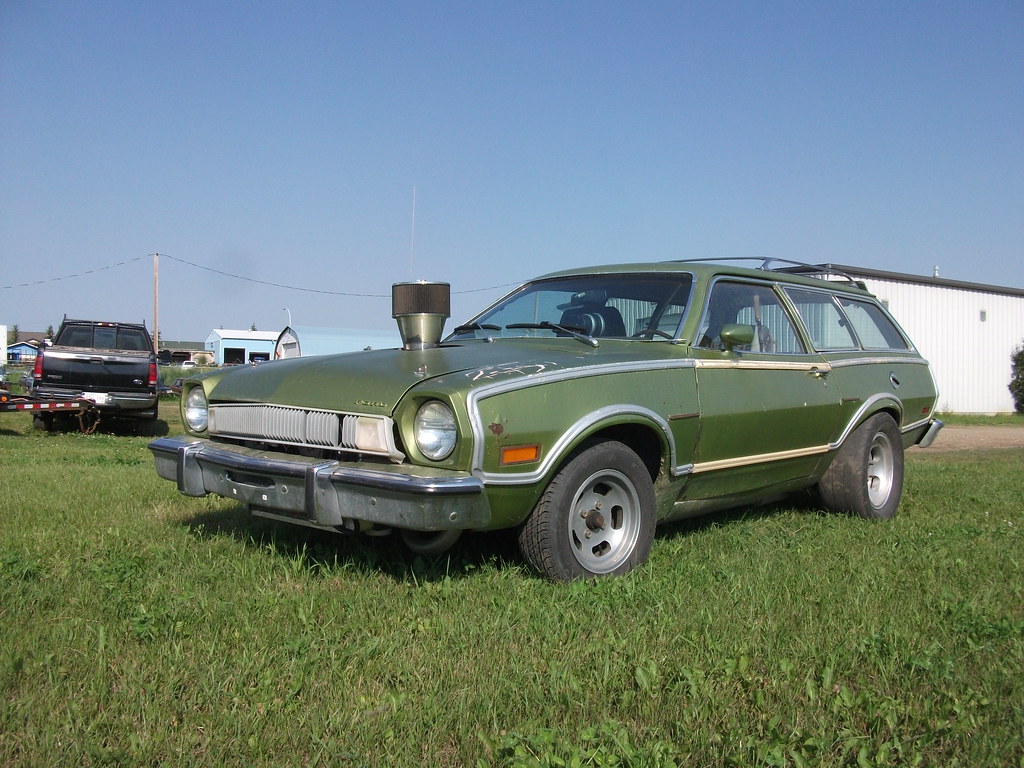
1. **Ford Pinto**The Ford Pinto arrived on the scene in the 1970s as a beacon of affordability and compact styling, quickly becoming a popular choice for city dwellers and budget-conscious buyers. Its small footprint and economical price point made it an attractive option during a period of rising fuel costs and a growing demand for smaller vehicles. Initial sales reflected its widespread appeal, establishing the Pinto as a recognizable fixture on American roads.
Despite its early success and market penetration, the Pinto’s legacy became inextricably linked with severe safety issues, particularly its rear-end collision vulnerability. This critical design flaw led to fuel tank fires in certain impact scenarios, igniting a firestorm of public outcry and regulatory scrutiny. The resulting notorious reputation significantly affected its long-term value, with many collectors actively shying away from the model due to its historical baggage.
While the Pinto remains an undeniable icon from the 1970s, a symbol of a particular era in automotive design and mass production, its design flaws and the associated controversies have cast a long shadow. This indelible mark on its history has effectively kept its resale value low, relegating it to a fascinating but ultimately undervalued chapter in Ford’s storied past, often sought more for its historical context than its investment potential.
Car Model Information: 1978 Ford Pinto RUNABOUT HATCHBACK
Name: Ford Pinto
Caption: Ford Pinto
Manufacturer: Ford Motor Company
Aka: Mercury Bobcat
Production: September 1970 – July 1980
ModelYears: 1971–1980 (Pinto),1974–1980 (Bobcat)
Assembly: Edison, New Jersey,Milpitas, California
Designer: Robert Eidschun (1968)
Class: Subcompact car
BodyStyle: Sedan (automobile),sedan delivery,station wagon,hatchback
Related: #Mercury Bobcat (1974–1980),Ford Mustang (second generation)
Layout: Front-engine, rear-wheel-drive layout
Chassis: Unibody
Engine: unbulleted list
Abbr: on
Disp: Ford Cologne engine
Transmission: unbulleted list
Wheelbase: 94.0 in
Length: 163 in
Width: 69.4 in
Height: 50 in
Weight: convert
Predecessor: Ford Cortina#Mark II (1966–1970)
Successor: Ford Escort (North America)
Categories: 1980s cars, Articles with short description, Cars discontinued in 1980, Cars introduced in 1970, Commons category link from Wikidata
Summary: The Ford Pinto is a subcompact car that was manufactured and marketed by Ford Motor Company in North America from 1970 until 1980. The Pinto was the first subcompact vehicle produced by Ford in North America.
The Pinto was marketed in three body styles throughout its production: a two-door fastback sedan with a trunk, a three-door hatchback, and a two-door station wagon. Mercury offered rebadged versions of the Pinto as the Mercury Bobcat from 1975 until 1980 (1974–1980 in Canada). Over three million Pintos were produced over its ten-year production run, outproducing the combined totals of its domestic rivals, the Chevrolet Vega and the AMC Gremlin. The Pinto and Mercury Bobcat were produced at Edison Assembly in Edison, New Jersey, St. Thomas Assembly in Southwold, Ontario, and San Jose Assembly in Milpitas, California.
Since the 1970s, the safety reputation of the Pinto has generated controversy. Its fuel-tank design attracted both media and government scrutiny after several deadly fires occurred when the tanks ruptured in rear-end collisions. A subsequent analysis of the overall safety of the Pinto suggested it was comparable to other 1970s subcompact cars. The safety issues surrounding the Pinto and the subsequent response by Ford have been cited widely as business ethics and tort reform case studies.
Get more information about: Ford Pinto
Buying a high-performing used car >>>
Brand: Ford Model: Pinto
Price: $18,995 Mileage: 88,217 mi.
Read more about: Boomers, Get Ready to Rev! These 12 Iconic ’60s Car Models Still Drive Our Dreams
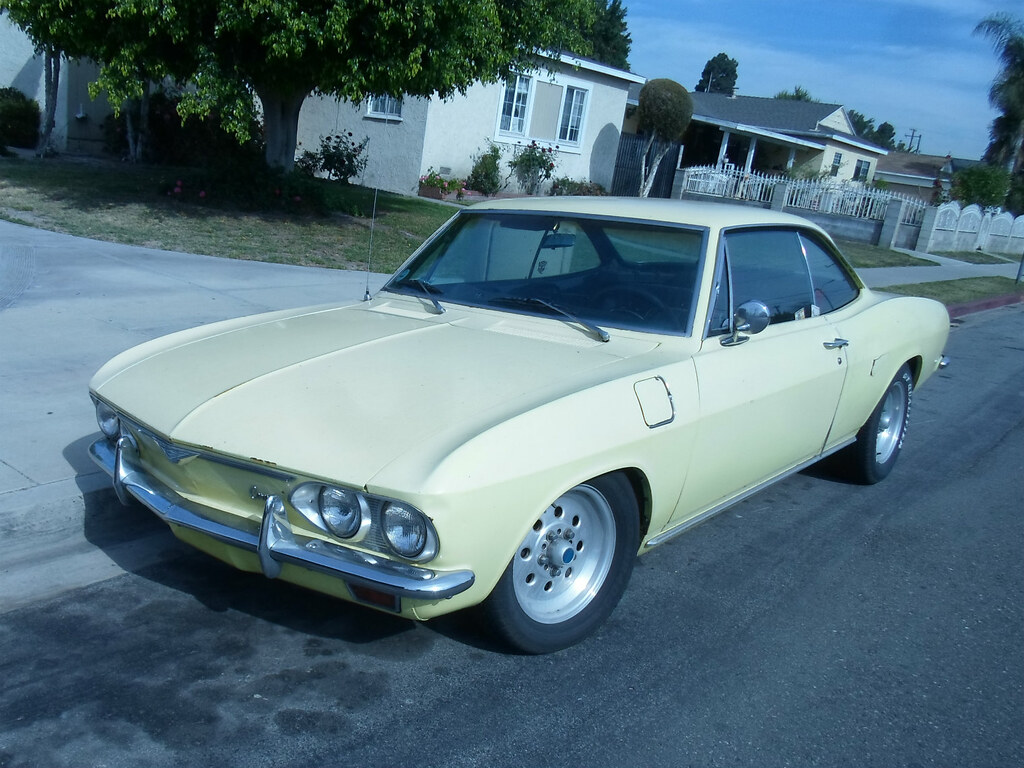
2. **Chevrolet Corvair**Chevrolet’s Corvair introduced a genuinely distinctive design to the American automotive landscape of the 1960s, standing apart with its unconventional rear-engine layout. This engineering choice was a bold departure from the front-engine, rear-wheel-drive configurations prevalent in most domestic cars, aiming to offer a European-inspired driving experience. Its unique styling and technical innovation initially garnered considerable attention and curiosity from the public.
However, the Corvair soon found itself at the center of a national debate regarding automotive safety, largely fueled by Ralph Nader’s influential book, *Unsafe at Any Speed*. Nader’s criticisms specifically highlighted potential safety concerns related to the car’s handling characteristics, particularly its swing-axle rear suspension design in early models. This public relations setback proved to be a devastating blow to the Corvair’s reputation and long-term appeal.
Over the years, despite its unique place in automotive history and pioneering design, the shadow of the safety controversy has persisted. The Corvair remains an affordable classic, a testament to how public perception, even if later mitigated by engineering improvements, can profoundly impact a vehicle’s market value. Its modest collector demand underscores the lasting effect of such widespread criticism on a car’s legacy and desirability.
Car Model Information: 1964 Chevrolet Corvair Monza
Caption: 1964 Chevrolet Corvair Monza
Name: Chevrolet Corvair
Manufacturer: Chevrolet
Production: 1960–1969
Platform: GM Z platform
Chassis: Unibody
ModelYears: 1960–1969
Assembly: United States,Kansas City, Missouri,Oakland, California,Van Nuys,St. Louis,Flint, Michigan,Belgium,Canada,Mexico,South Africa,Switzerland,Venezuela
Class: Compact car
Successor: Chevrolet Vega
Layout: Rear-engine, rear-wheel-drive layout
Categories: All Wikipedia articles written in American English, All articles lacking in-text citations, All articles needing additional references, All articles with dead external links, All articles with specifically marked weasel-worded phrases
Summary: The Chevrolet Corvair is a rear-engined, air-cooled compact car manufactured and marketed by Chevrolet over two generations between 1960 and 1969. The Corvair was a response to the increasing popularity of small, fuel-efficient automobiles, particularly the imported Volkswagen Beetle and American-built compacts like the Rambler American and Studebaker Lark.
The first generation (1960–1964) was offered as a four-door sedan, two-door coupe, convertible, and four-door station wagon. A two- and four-door hardtop and a convertible were available second-generation (1965–1969) variants. The Corvair platform was also offered as a subseries known as the Corvair 95 (1961–1965), which consisted of a passenger van, commercial van, and pickup truck variant. Total production was approximately 1.8 million vehicles from 1960 until 1969.
The name “Corvair” was first applied in 1954 to a Corvette-based concept with a hardtop fastback-styled roof, part of the Motorama traveling exhibition. When applied to the production models, the “air” part referenced the engine’s cooling system.
A prominent aspect of the Corvair’s legacy derives from controversy surrounding the handling of early models equipped with rear swing axles, articulated aggressively by Ralph Nader’s Unsafe at Any Speed but tempered by a 1972 Texas A&M University safety commission report for the National Highway Traffic Safety Administration (NHTSA) which found that the 1960–1963 Corvair possessed no greater potential for loss of control in extreme situations than contemporary compacts.
To better counter popular inexpensive subcompact competitors, notably the Beetle and Japanese imports such as the Datsun 510, GM replaced the Corvair with the more conventional Chevrolet Vega in 1970.
Get more information about: Chevrolet Corvair
Buying a high-performing used car >>>
Brand: Chevrolet Model: Corvair
Price: $29,988 Mileage: 74,787 mi.
Read more about: You Probably Never Knew These 14 Celebrities Were Involved in Deaths, And The Stories Are Wild
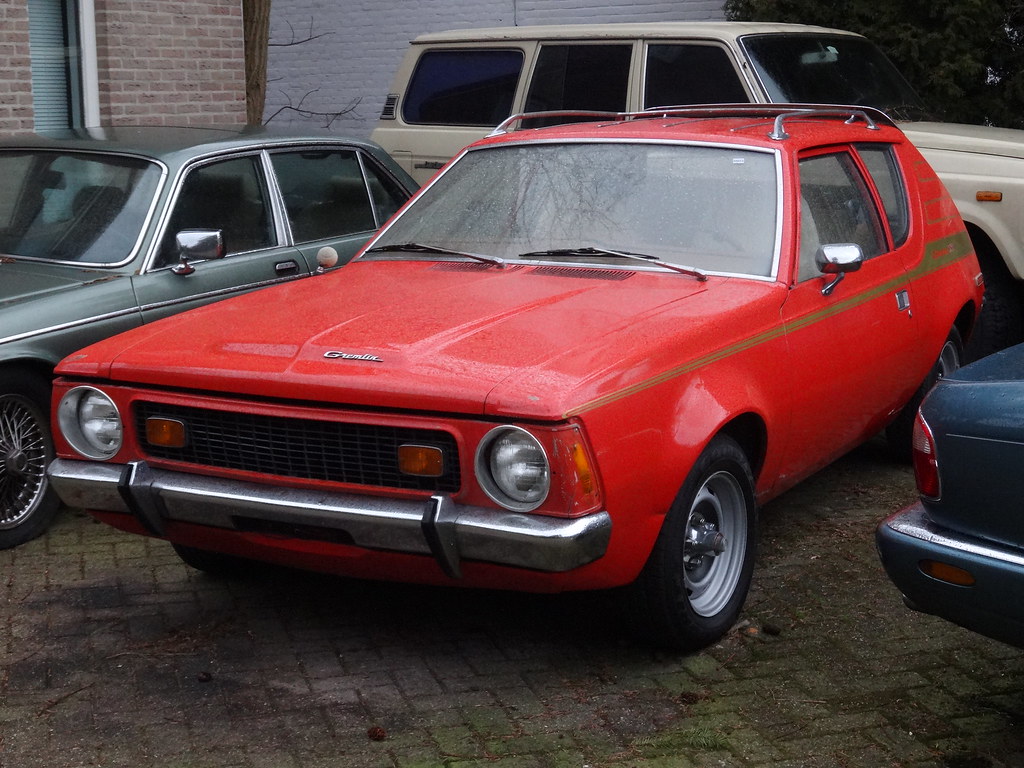
3. **AMC Gremlin**The AMC Gremlin is vividly remembered for its undeniably bold and quirky design, which allowed it to carve out a distinct niche in the compact car market of the 1970s. Its chopped-tail aesthetic and unusual proportions were a deliberate attempt to stand out, offering a budget-friendly option with a unique visual identity. This distinctiveness, combined with its accessible pricing, ensured its popularity during its production run.
Yet, despite its initial market appeal, the Gremlin has not retained significant value over the decades since its debut. Many car enthusiasts and collectors tend to view it more as a novelty item or a curious piece of automotive eccentricity rather than a genuine high-value classic. Its highly unconventional design choices, while making it a cult favorite among a dedicated few, have largely precluded it from mainstream collector appreciation.
Consequently, the Gremlin remains an accessible option for those seeking a unique and conversation-starting piece of automotive history. It offers a chance to own a slice of 1970s design audacity without incurring the high costs associated with more conventionally revered classics. Its affordability is a direct reflection of its niche appeal and the market’s general reluctance to assign it premium collector status, making it an interesting paradox in the vintage car world.
Read more about: 11 SUVs That Promise Adventure But Deliver Owners Immediate Regret

4. **Triumph TR7**The Triumph TR7, a British sports car that emerged in the late 1970s, aimed to bring a modern, wedge-shaped aesthetic to the sports car segment, a stylistic departure that proved controversial among traditional enthusiasts. Its sharp, angular lines were marketed as “the shape of things to come,” symbolizing a new direction for the brand. It sought to combine contemporary design with the spirit of a sporty drive, attracting a new generation of buyers.
However, any promise of a spirited driving experience was quickly overshadowed by widespread reports of frequent mechanical issues and persistent reliability concerns. The TR7 was produced during a particularly tumultuous period for British Leyland, which contributed to its reputation for rushed assembly and inherent quality control problems. These issues created significant frustration for owners and severely impacted the car’s overall market standing.
Many serious collectors have been understandably deterred by the TR7’s notorious reputation for unreliability and its demand for ongoing, often costly, maintenance. While its distinctive design is certainly memorable and sparks curiosity, the car’s pervasive mechanical troubles have positioned it as one of the less desirable British classics available on the market today. Its value remains low, reflecting the long-term consequences of its foundational quality control challenges.
Car Model Information: 1981 Triumph TR7
Sp: uk
Name: Triumph TR7
Caption: 1975 Triumph TR7
Production: unbulleted list
Manufacturer: British Leyland Motor Corporation
Class: Sports car
Layout: FR layout
Predecessor: Triumph TR6
Transmission: unbulleted list
Related: Triumph TR8
Engine: unbulleted list
Abbr: on (coupé)
BodyStyle: unbulleted list
Wheelbase: 85 in
Length: 160 in
Width: 66.2 in
Weight: 1101 kg
Order: flip (coupé)
Height: 50 in
Assembly: unbulleted list
Designer: Harris Mann
Categories: 1980s cars, All articles with unsourced statements, Articles tagged with the inline citation overkill template from January 2024, Articles with short description, Articles with specifically marked weasel-worded phrases from January 2024
Summary: The Triumph TR7 is a sports car that was manufactured in the United Kingdom from September 1974 to October 1981 by British Leyland Motor Corporation (BLMC), which changed its name to British Leyland (BL) in 1975. The car was launched in the United States in January 1975, with its UK home market debut in May 1976. The UK launch was delayed at least twice because of high demand for the vehicle in the US, with final sales of new TR7s continuing into 1982.
It was initially produced at the Speke, Liverpool, factory, moving to Canley, Coventry, in 1978 and then finally to the Rover Solihull plant in 1980.
Get more information about: Triumph TR7
Buying a high-performing used car >>>
Brand: Triumph Model: TR7
Price: $12,500 Mileage: 83,693 mi.
Read more about: The Costly Truth: 14 Classic Cars That Are Simply Not Worth Restoring for the Savvy Enthusiast
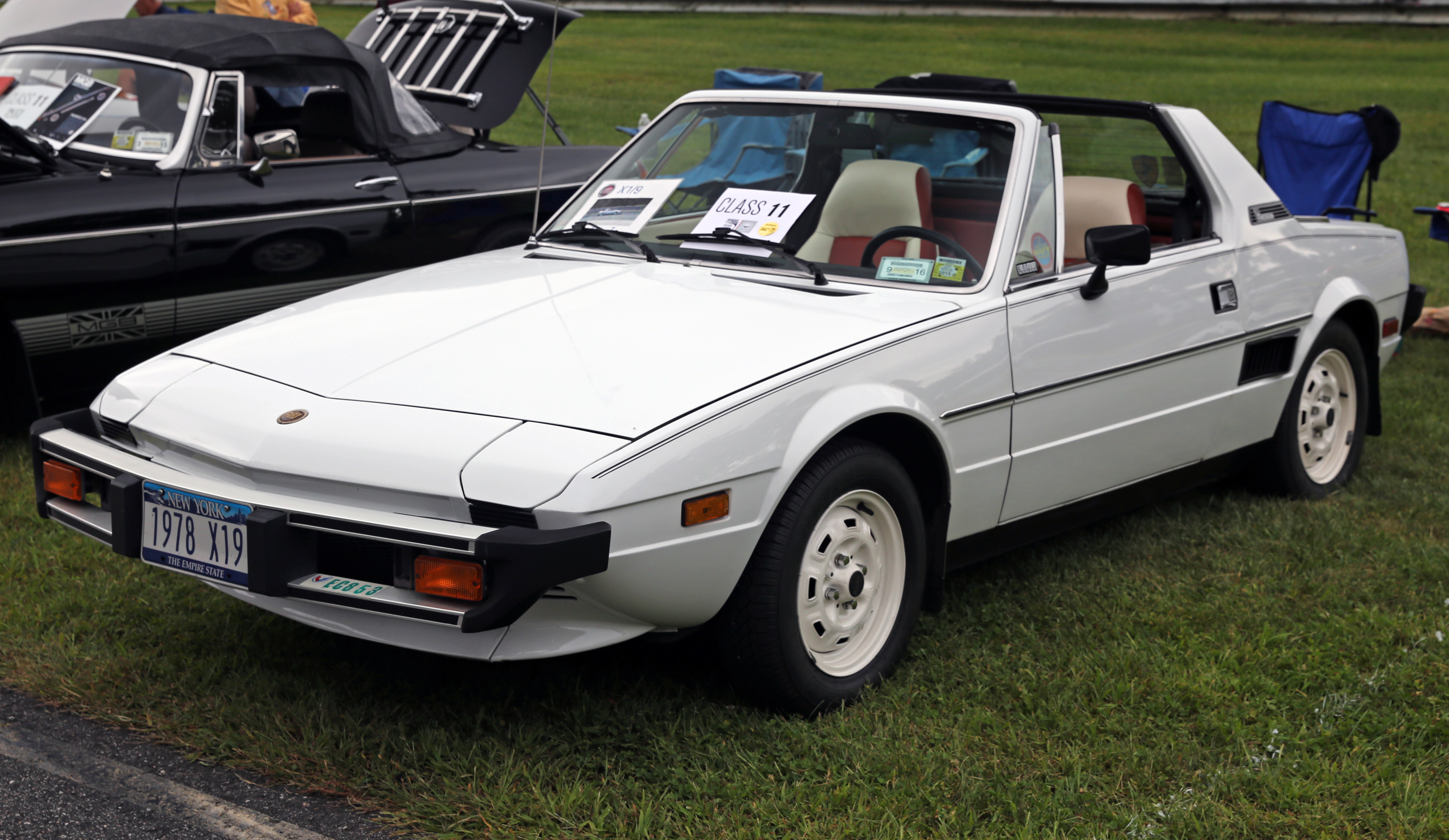
5. **Fiat X1/9**The Fiat X1/9, a lightweight, mid-engine sports car from the 1970s, captivated enthusiasts with its innovative targa top design and inherent nimbleness. Conceived by Bertone, its sophisticated layout placed the engine behind the driver, contributing to exceptional balance and handling dynamics, offering a genuinely fun and engaging driving experience. This engineering prowess and stylish Italian design gave it an immediate and distinctive charm.
Despite its admirable handling characteristics and unique appeal, the X1/9 was often hampered by its relatively low power output, which some drivers found underwhelming. More significantly, the car became known for its high maintenance requirements and the recurring mechanical issues inherent to many European sports cars of its era. These demands presented a considerable challenge for owners, impacting the practicalities of long-term ownership.
The combination of limited parts availability and the need for frequent attention has limited its broader appeal among collectors. While it possesses an undeniable unique charm and a loyal following among those willing to tackle its upkeep, these practical downsides have consistently kept its value relatively low. The X1/9 remains an affordable option for dedicated enthusiasts who are prepared for the commitment required to keep this distinctive and engaging classic on the road.
Car Model Information: 1978 FIAT X1/9 Base
Name: Fiat X1/9
Manufacturer: Fiat
Aka: Bertone X1/9
Production: [object Object]
Assembly: Fiat,Gruppo Bertone
Designer: Marcello Gandini
Class: Sports car
BodyStyle: Targa top
Layout: Rear mid-engine, rear-wheel-drive layout
Related: Fiat 128,Fiat Ritmo
Engine: Fiat 128 SOHC engine,Fiat 128 SOHC engine
Transmission: Manual transmission
Wheelbase: cvt
Length: cvt
Width: cvt
Height: cvt
Weight: cvt
Predecessor: Fiat 850,Vignale Gamine
Successor: Fiat Barchetta
Sp: uk
Categories: 1980s cars, Articles with short description, Bertone vehicles, CS1 Italian-language sources (it), Cars introduced in 1972
Summary: The Fiat X1/9 is an Italian two-seater mid-engined sports car designed by Bertone and manufactured by Fiat from 1972–1982 and subsequently by Gruppo Bertone from 1982–1989.
With a transverse engine and gearbox in a mid-mounted, rear-wheel drive configuration, the X1/9 was noted for its balanced handling, retractable headlights, lightweight removable hardtop which could be stowed under the bonnet, front and rear storage compartments — and for being the first Fiat to have been designed from its conception to meet US safety regulations.
Get more information about: Fiat X1/9
Buying a high-performing used car >>>
Brand: Fiat Model: X1/9
Price: $6,995 Mileage: 42,783 mi.
Read more about: The Road Less Traveled (and Valued): 14 Classic Cars That Are Now Worth Less Than You Think

6. **Ford Thunderbird (late ’70s models)**The Ford Thunderbird, a name synonymous with American automotive style and performance for decades, saw a significant transformation by its late 1970s iterations. These models were characterized by a notable increase in size and a distinct shift towards luxurious styling, prioritizing comfort and personal luxury over the sporty agility and raw power that defined its earlier, more iconic versions. The car evolved into a grand tourer, reflecting changing consumer tastes.
This evolution, however, proved to be a double-edged sword for its long-term collector status. While stylish and comfortable for their era, these larger, less performance-focused Thunderbirds often found themselves overlooked by discerning collectors. They were perceived as less exciting and, critically, too common due to their higher production numbers, diluting the sense of exclusivity that often drives classic car values.
As a result, the late 1970s Thunderbirds do not command the same admiration or, more importantly, the elevated prices as their esteemed predecessors. They stand as an interesting historical footnote, demonstrating a period where the Thunderbird moved away from its performance roots. While they offer a comfortable ride and a distinctive period aesthetic, their lack of a compelling performance narrative and widespread availability have kept their market value comparatively subdued.
Car Model Information: 2003 Ford Thunderbird
Name: Ford Thunderbird
Caption: 1957 Thunderbird
Manufacturer: Ford Motor Company
Production: unbulleted list
ModelYears: unbulleted list
Class: unbulleted list
Layout: Front-engine, rear-wheel drive layout
Categories: 1960s cars, 1970s cars, 1980s cars, 1990s cars, 2000s cars
Summary: The Ford Thunderbird is a personal luxury car manufactured and marketed by Ford Motor Company for model years 1955 to 2005, with a hiatus from 1998 to 2001.
Ultimately gaining a broadly used colloquial nickname, the T-Bird, the model was introduced as a two-seat convertible, subsequently offered variously in a host of body styles including as a four-seat hardtop coupe, four-seat convertible, five-seat convertible and hardtop, four-door pillared hardtop sedan, six-passenger hardtop coupe, and five-passenger pillared coupe, before returning in its final generation, again as a two-seat convertible.
At its inception, Ford targeted the two-seat Thunderbird as an upscale model. The 1958 model year design introduced a rear seat and arguably marked the expansion of a market segment that came to be known as personal luxury cars, positioned to emphasize comfort and convenience over handling and high-speed performance.
Get more information about: Ford Thunderbird
Buying a high-performing used car >>>
Brand: Ford Model: Thunderbird
Price: $14,500 Mileage: 49,430 mi.
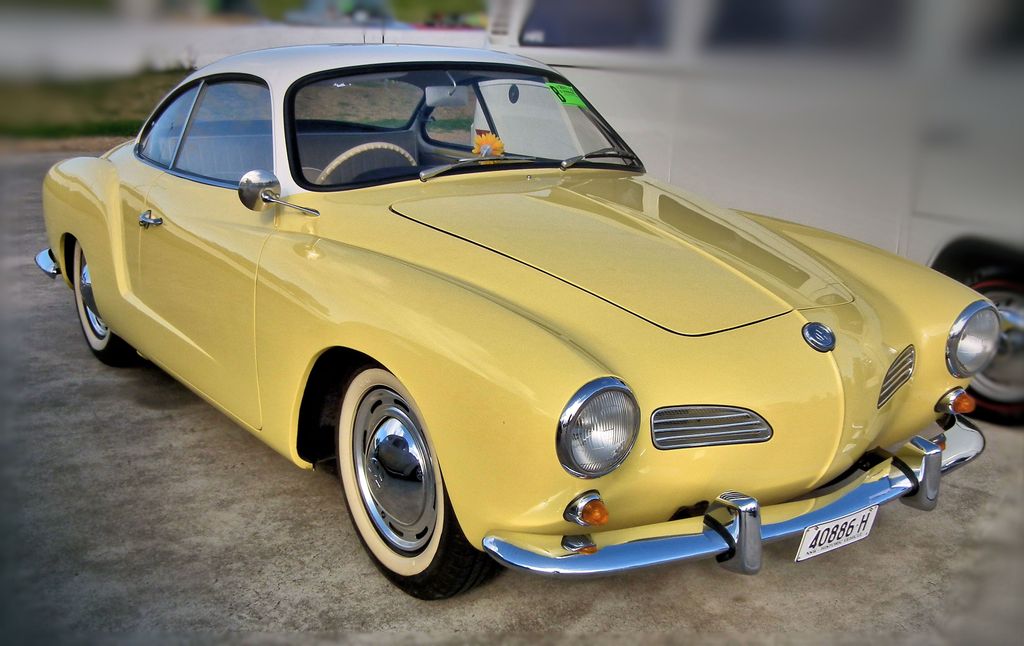
7. **Volkswagen Karmann Ghia**The Volkswagen Karmann Ghia is widely celebrated for its beautifully sculpted design, a unique blend of robust German engineering and exquisite Italian styling. It married the reliable, if utilitarian, chassis and components of the VW Beetle with a sleek, elegant body crafted by the coachbuilders Ghia and Karmann. This resulted in a car that offered a distinct, more upscale aesthetic than its Beetle sibling, promising a touch of European flair.
Despite its undeniable good looks and unique heritage, the Karmann Ghia never achieved the same widespread popularity or iconic status as the ubiquitous VW Beetle. Crucially, it shared the Beetle’s low-powered air-cooled engine, meaning its stylish exterior wasn’t matched by a corresponding level of performance. This disparity between its sophisticated appearance and modest power often left potential buyers wanting more, impacting its market position.
Consequently, while it remains a stylish classic, Karmann Ghias do not attract the same high demand or value that one might instinctively expect for such a visually appealing vintage Volkswagen. This makes it a more accessible option for enthusiasts who appreciate a classic VW with a bit more flair and a distinct design pedigree, yet without the premium price tag associated with higher-performing or more widely collected models. Its charm is undeniable, but its market value reflects its less-than-thrilling performance.
The journey through classic cars that, despite their charm, haven’t quite reached the collector’s pinnacle continues as we delve into more vehicles where the weight of time, maintenance demands, and shifting market preferences have taken their toll. These are cars that, for various reasons, present a more accessible entry point into the vintage automotive world, offering history and unique character without the premium price tags of their more highly valued brethren.
Car Model Information: 2022 Honda Civic Sport
Name: Volkswagen Types 14, 34, and 145
Caption: 1962 Type 14 VW Karmann Ghia
Manufacturer: Volkswagen
Production: Germany,Type 14: 1955–1974,Type 34: 1961/1962–1969,
445,238 total units built:,Coupé: 364,401 (Type 14 and 34),Cabriolet: 80,837 (all Type 14)
Brazil,Type 14: 1962–1971,TC (Touring Coupé): 1972–1975,
41,689 total units built:,Coupé: 23,393,Cabriolet: 177,TC (Touring Coupé): 18,119
Related: Volkswagen Beetle,Volkswagen Type 3,Puma (car manufacturer)#Volkswagen era
Class: Sports car
BodyStyle: convertible (car)
Engine: flat-4
Designer: Carrozzeria Ghia
Layout: RR layout
Successor: Porsche 914,Volkswagen Scirocco,Volkswagen SP2
Assembly: Osnabrück
Categories: 1960s cars, 1970s cars, All articles with unsourced statements, Articles with short description, Articles with unsourced statements from May 2023
Summary: The Volkswagen Karmann Ghia are a family of three overlapping sports car models produced by Volkswagen, marketed in 2+2 coupe (1955–1975) and 2+2 convertible (1957–1975) body styles, though German production ended one year before that in Brazil. Internally designated the Type 14 (1955–1975), the Type 34 (1962–1969), and the Type 145 TC (1972–1975; Brazil), the Karmann Ghia cars combined the floorpans and mechanicals of the Type 1 / Beetle or Type 3 ‘ponton’ models with styling by Italy’s Carrozzeria Ghia, and hand-built bodywork by German coachbuilding house Karmann.
The 1955 Type 14 Karmann Ghia was just the second Volkswagen passenger car ever produced, after the Beetle, and launched six years before the Type 3 notchbacks, fastbacks and Variants (squarebacks). They were faster and more expensive than the Beetle, but very cramped in the back, despite their wider, postwar and nearly slabsided body design. Two years later, in 1957, a convertible was added.
In 1961, the Karmann Ghia briefly lost its title of fastest Volkswagen, upon launch of the more powerful 1500cc Type 3 models, but later that year, Volkswagen, Ghia, and Karmann presented an all new Karmann Ghia – Type 34, using the Type 3’s floorpan and 1500cc powertrain. Made from 1962 to 1969, this had both new, more modern, angular and roomier bodywork; and a new, more luxurious interior, making it substantially more expensive than all other VW passenger cars. Additionally, the Type 34 was one of the world’s first cars with a power operated steel sunroof option. The Type 34 Karmann Ghia thus became VW’s range-topper again – costing up to twice the price of a Beetle – while the cheaper Type 14 remained in production. Only the latter offered a convertible.
Failure to offer the Type 34 in the United States – the Karmann Ghia’s most important market – combined with high pricing elsewhere likely contributed to limited sales, and after the type 14 also received the 1500cc engine in 1967, production of Type 34s was ended during 1969. Volkswagen of Brazil nevertheless looked for an alternative in its market segment, and so Carrozzeria Ghia was again commissioned, to design a third Karmann Ghia model, for the South American market, the Karmann Ghia TC (Touring Coupé), made in Brazil from 1972–1975. The result was a stylish, rakish fastback that offered good interior space for a 2+2 car.
For its final model year, the vestigial rear seat in the Type 14 was discontinued for North American models, as it lacked provisions for seat belts; all Karmann Ghias for 1974 were marketed strictly as two-seaters.
More than 445,000 Karmann Ghias were produced in Germany over the car’s production life, not including the Type 34 variant. Volkswagen do Brasil (Volkswagen Brasil) produced 41,600 Type 34s in Brazil for South America between 1962 and 1975.
Long noted for its exterior styling, the Karmann Ghia was designed with input from numerous individuals at Carrozzeria Ghia and was strongly influenced by Virgil Exner’s work, though all of its designers passed without a definitive individual styling attribution.
Get more information about: Volkswagen Karmann Ghia
Buying a high-performing used car >>>
Brand: Volkswagen Model: Karmann Ghia
Price: $25,849 Mileage: 16,061 mi.
Read more about: Beyond the Badges: 10 Revolutionary 1960s Sports Cars Only True Collectors Will Recognize
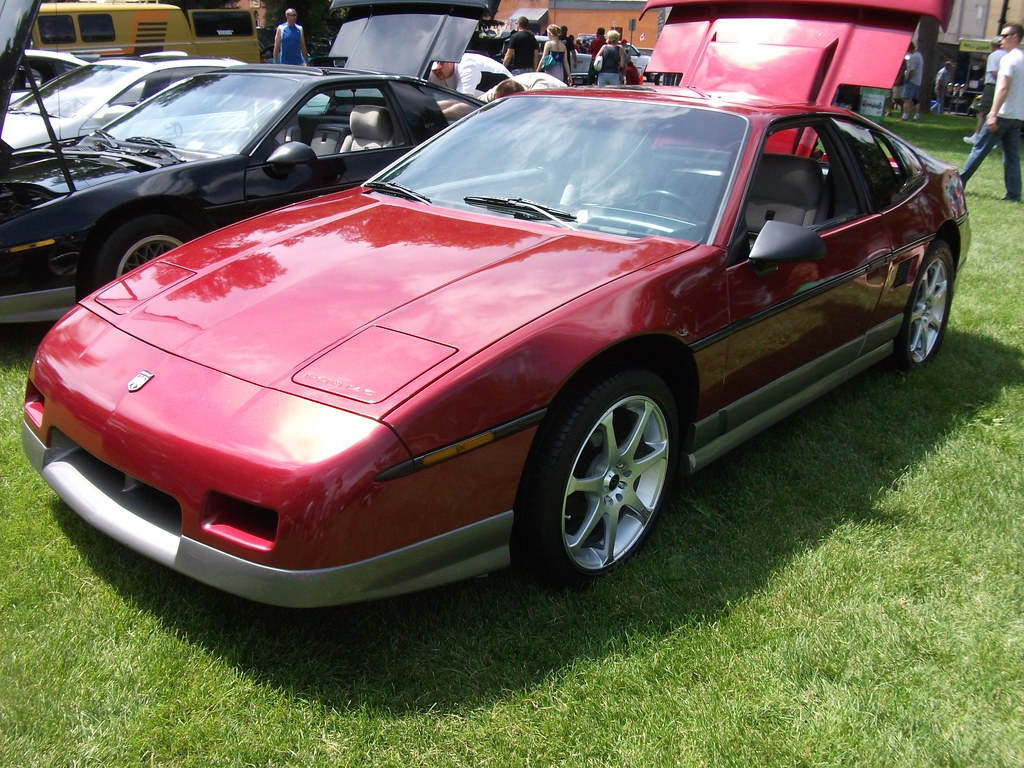
8. **Pontiac Fiero**The Pontiac Fiero burst onto the scene in the 1980s, marking a bold and ambitious move as America’s first mass-produced mid-engine sports car. This innovative design concept immediately captured attention, showcasing a forward-thinking approach to performance vehicle architecture within a mainstream American brand. It represented a fascinating departure from the traditional front-engine layouts, promising an exciting and accessible sports car experience.
However, the Fiero’s initial promise was unfortunately overshadowed by a series of pressing challenges, primarily revolving around its reliability. The model quickly gained a reputation for mechanical issues, including widely reported problems with overheating, which significantly tarnished its image. These early performance concerns ultimately hurt its standing with potential buyers and enthusiasts, casting a long shadow over its innovative design.
Despite its ambitious and truly innovative design, these early reliability woes proved to be a critical factor in limiting its long-term collector appeal. While there remains a strong appreciation for the Fiero’s pioneering spirit and bold engineering within automotive circles, its mixed performance record has kept its market value surprisingly low. This makes it an intriguing and affordable classic for those who appreciate its historical significance and unique layout, provided they are willing to navigate its storied past.
Car Model Information: 1988 Pontiac Fiero Formula
Name: Pontiac Fiero
Caption: 1988 Fiero Formula
Manufacturer: Pontiac (automobile)
Production: August 1983 – August 16, 1988,370,168 produced
ModelYears: 1984 – 1988
Successor: Pontiac Solstice
Assembly: Pontiac, Michigan
Designer: Hulki Aldikacti,George Milidrag
Class: Sports car
BodyStyle: fastback,notchback
Platform: GM P platform
Layout: Rear mid-engine, rear-wheel-drive layout
Engine: {{cvt,151,CID,L,1,disp=flip,Iron Duke engine#LR8,Inline-four engine
Transmission: Turbo-Hydramatic 125,Manual transmission,Getrag 282 transmission,Isuzu
Wheelbase: 2373 mm
Abbr: on
Length: 4072 mm
Width: 1750 mm
Height: 1191 mm
Weight: 1116 to
Categories: All articles with unsourced statements, Articles with short description, Articles with unsourced statements from February 2012, Articles with unsourced statements from July 2024, Articles with unsourced statements from September 2011
Summary: The Pontiac Fiero is a rear mid-engine, light sports car manufactured and marketed by Pontiac for model years 1984 – 1988. Intended as an economical commuter car with modest performance aspirations, it was Pontiac’s first two-seater since their 1926 to 1938 coupes, and the first mass-produced, rear mid-engine car by any American manufacturer.
In addition to using 4- and 6-cylinder engines to help Pontiac meet America’s ‘CAFE’ average fuel economy requirements, the Fiero’s chassis and structure technology used non-load-bearing, composite body-panels, contributing to the car’s light-weight and its unique selling proposition. Pontiac engineers modified the design over its life to enhance its performance and reposition the two-seater closer to the implications of its sporty configuration.
The Fiero 2M4 (two-seat, mid-engine, four-cylinder) placed on Car and Driver magazine’s Ten Best list for 1984, and was the Official Pace Car of the Indianapolis 500 for 1984.
A total of 370,168 Fieros were manufactured over five years’ production, its mild performance, reliability and safety issues becoming points of criticism. The Fiero was discontinued after annual sales fell steadily.
Get more information about: Pontiac Fiero
Buying a high-performing used car >>>
Brand: Pontiac Model: Fiero
Price: $11,000 Mileage: 101,027 mi.
Read more about: Beyond the Big Blocks: Unearthing 14 Forgotten 1980s GM Muscle Cars That Command Attention Today
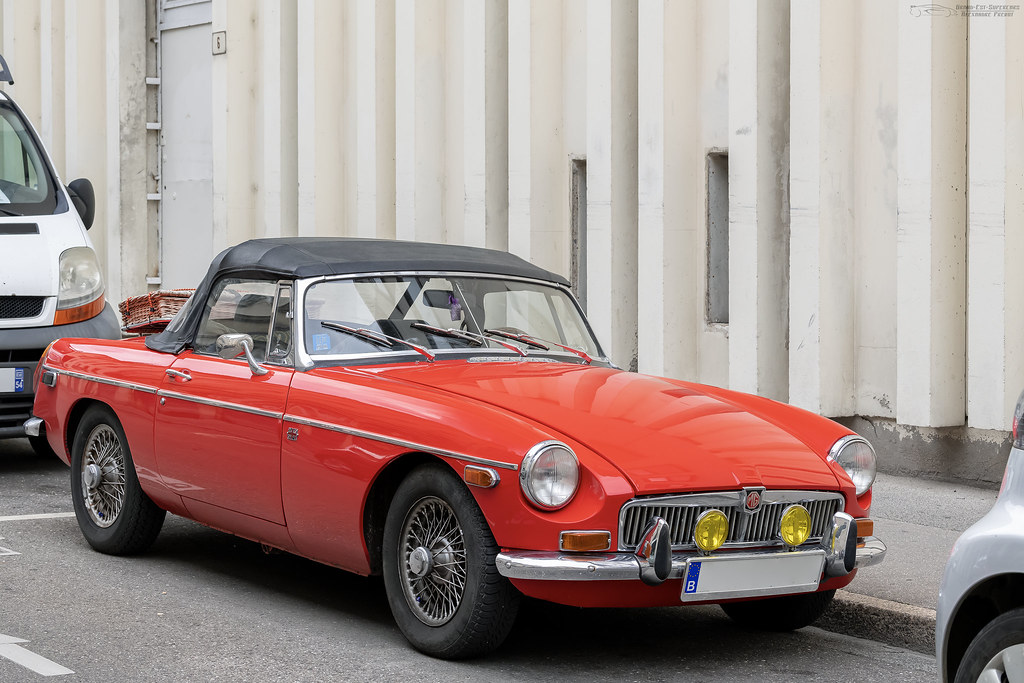
9. **MG MGB**The MG MGB stands as an enduring symbol of the classic British roadster, celebrated for its uncomplicated design and the sheer joy it brought to open-air motoring. Its straightforward engineering and classic proportions resonated deeply with a wide audience, establishing it as one of the most popular sports cars ever to emerge from the UK. The MGB truly defined an era of accessible, fun-to-drive two-seaters.
Yet, the very popularity and extensive production run that made the MGB a household name also contributed to its current market status. Produced in vast numbers over an extended period, the car’s widespread availability has intrinsically limited its rarity, a key factor that often drives up collector prices. Unlike more exclusive classics, the MGB’s ubiquity means it doesn’t command the same premium values.
While the MGB continues to enjoy a robust and dedicated enthusiast following, its abundant presence in the market prevents it from becoming a high-value collectible. It offers undeniable charm and a solid community, making it an excellent entry-level option for anyone eager to own a piece of British motoring history without incurring a hefty price tag. Its affordability is a direct reflection of its mass appeal rather than any inherent flaw.
Car Model Information: 1977 MG MGB Roadster
Name: MGB
Caption: 1969 MGB roadster – rollover bar non-standard
Layout: FR layout
Manufacturer: British Motor Corporation,British Leyland,Rover Group
Production: 1962–1980 (original),1992–1995 (MG RV8)
Predecessor: MG MGA
Successor: MG F / MG TF
Class: Sports car
Assembly: Abingdon, Oxfordshire,Enfield, New South Wales,Cowley, Oxford
Categories: 1970s cars, 1980s cars, 1990s cars, All articles lacking reliable references, All articles with unsourced statements
Summary: The MGB is a two-door sports car manufactured and marketed from 1962 until 1980 by the British Motor Corporation (BMC), later the Austin-Morris division of British Leyland, as a four-cylinder, soft-top sports car sold under the MG marque. It was announced and its details first published on 19 September 1962. Variants include the MGB GT three-door 2+2 coupé (1965–1980), the six-cylinder sports car and coupé MGC (1967–1969), and the eight-cylinder 2+2 coupé, the MGB GT V8 (1973–1976).
Replacing the MGA in 1962, production of the MGB and its variants continued until 1980, though fixed roof GT models ceased export to the US in 1974. Sales for the MGB, MGC and MGB GT V8 combined totaled 523,836 cars. After a 12-year hiatus, the MGB re-entered production as the heavily modified MG RV8 with a limited run of 2,000 cars before its final replacement in 1995 by the MG F.
Get more information about: MG MGB
Buying a high-performing used car >>>
Brand: MG Model: MGB
Price: $14,999 Mileage: 70,789 mi.
Read more about: Hybrid vs. Electric Cars: The Definitive Guide to Which One Truly Saves You Money (Shocking Truth)
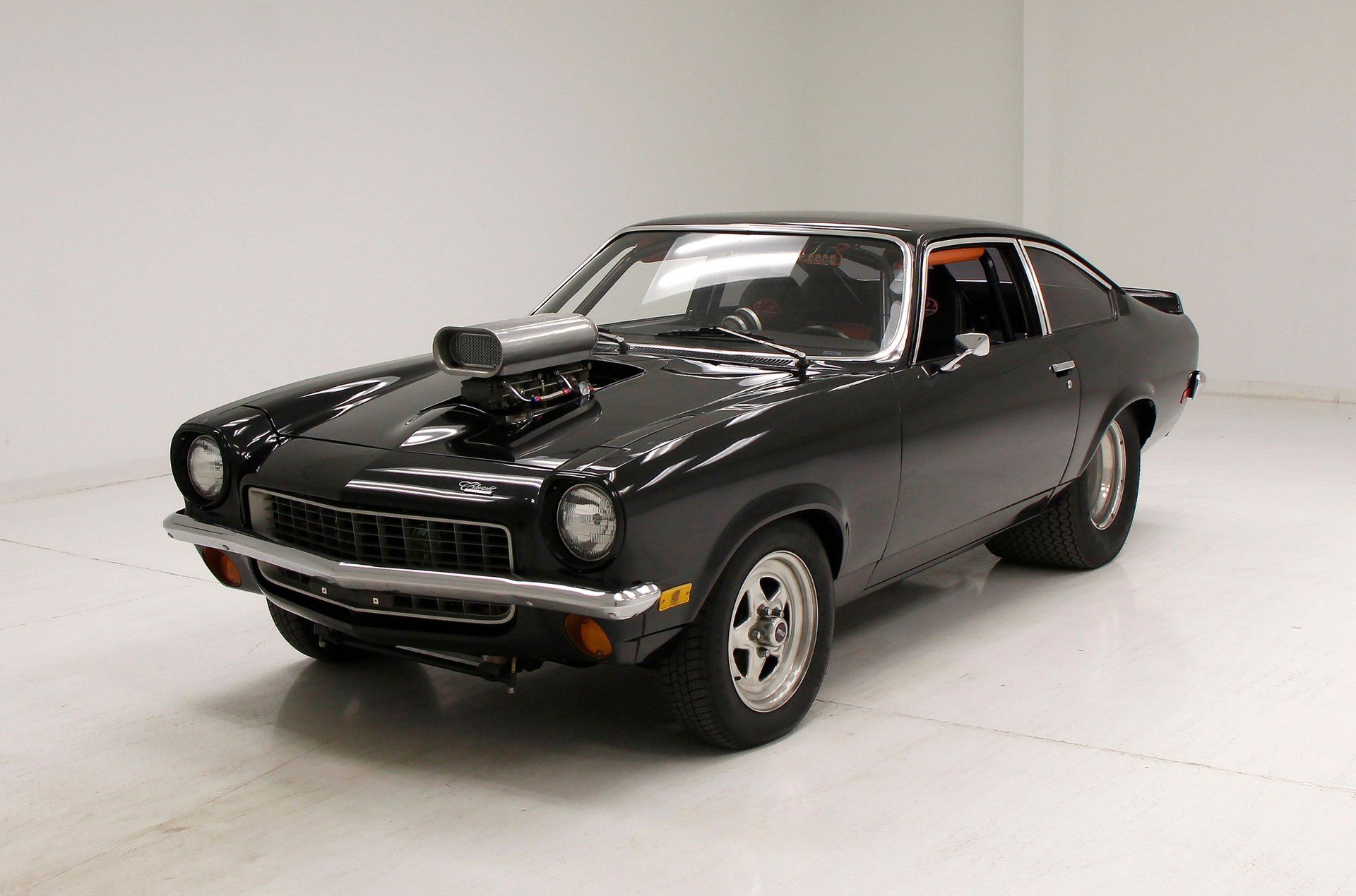
10. **Chevrolet Vega**The Chevrolet Vega was introduced with aspirations of becoming a highly economical and compact car, designed to meet the growing demand for smaller, fuel-efficient vehicles in its era. It featured several innovative design elements for its time, aiming to offer a modern and practical solution for the everyday driver. Initially, it looked like a promising contender in the burgeoning compact market.
However, the Vega’s reputation soon plummeted due to a host of significant reliability and engine-related issues, most notably problems with its pioneering aluminum-block engine. These quality concerns quickly led to a decline in its public perception and overall popularity, transforming it from a promising new model into a cautionary tale of mass production challenges. The engine troubles, in particular, became a persistent black mark.
Consequently, the recurring mechanical problems have effectively suppressed the Vega’s collector value. While it still holds a certain nostalgic appeal for those who remember its era, or perhaps even owned one, it remains firmly positioned as one of the more affordable vintage options available. Its historical significance is more about lessons learned in automotive engineering and quality control than about soaring market demand.
Car Model Information: 1976 Chevrolet Vega
Name: Chevrolet Vega
Caption: 1971 Chevrolet Vega
Aka: Vega 2300
Manufacturer: Chevrolet
Production: 1970–1977
ModelYears: 1971–1977
Assembly: Lordstown, Ohio
Predecessor: Chevrolet Corvair
Successor: Chevrolet Monza
Class: Subcompact car
BodyStyle: notchback,hatchback,station wagon,Panel van
Layout: FR layout
Platform: GM H platform (RWD)
Engine: {{cvt,2.3,L,cuin,0,Chevrolet 2300 engine
Transmission: manual transmission,4-speed manual,overdrive (mechanics),Torque-Drive 2-speed Powerglide requiring manual shifting,Powerglide,Turbo-Hydramatic
Wheelbase: cvt
Length: cvt
Width: cvt
Height: cvt
Weight: cvt
Related: Pontiac Astre,Chevrolet Monza,Pontiac Sunbird#First generation (1976–1980),Buick Skyhawk#First generation (1975–1980),Oldsmobile Starfire#Second generation (1975–1980)
Designer: Bill Mitchell (designer)
Categories: 1970s cars, All articles needing additional references, All articles with unsourced statements, Articles needing additional references from July 2023, Articles with short description
Summary: The Chevrolet Vega is a subcompact automobile manufactured and marketed by GM’s Chevrolet division from 1970 until 1977. Available in two-door hatchback, notchback, wagon, and sedan delivery body styles, all models were powered by an inline four-cylinder engine designed specifically for the Vega, with a lightweight aluminum alloy cylinder block. The Vega first went on sale in Chevrolet dealerships on September 10, 1970. Variants included the Cosworth Vega, a short-lived limited-production performance version introduced spring 1975.
The Vega received the 1971 Motor Trend Car of the Year. Subsequently, the car became widely known for a range of problems related to its engineering, reliability, safety, propensity to rust, and engine durability. Despite numerous recalls and design upgrades, Vega’s problems tarnished its reputation and that of General Motors. Production ended with the 1977 model year.
The car was named for Vega, the brightest star in the constellation Lyra.
Get more information about: Chevrolet Vega
Buying a high-performing used car >>>
Brand: Chevrolet Model: Vega
Price: $33,000 Mileage: 82,344 mi.
Read more about: Buckle Up! These 15 Car Trends Are Making Everyone Nuts – And Need to Stay in the Past!
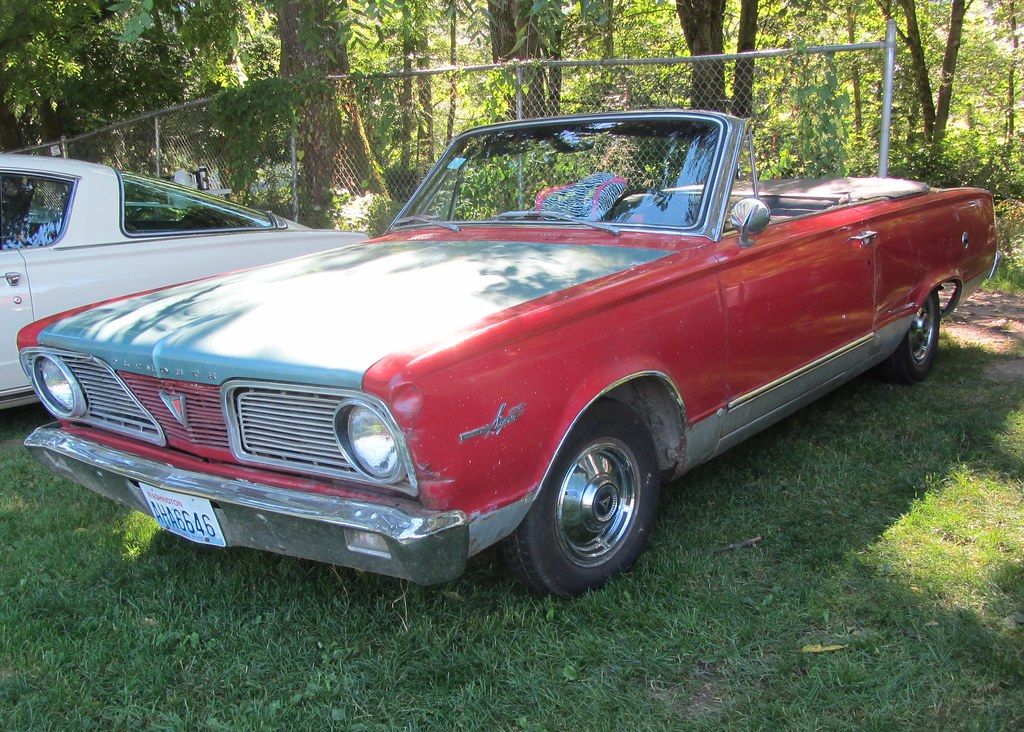
11. **Plymouth Valiant**The Plymouth Valiant cemented its legacy as a remarkably durable and practical choice for countless drivers throughout the 1960s and 1970s. Renowned for its robustness and straightforward engineering, it was a workhorse of a car, prioritizing dependable transportation over flashy features or high-performance ambitions. Its widespread adoption spoke volumes about its reliability and no-nonsense appeal.
Despite its commendable durability and loyal following, the Valiant’s widespread availability, coupled with its fundamentally no-frills design, has prevented it from achieving high collector value. It was built as an accessible family car, and its very commonness means it lacks the exclusivity or exotic appeal that often drives premium prices in the classic car market. Its practicality outweighed its potential for rarity.
Possessing a strong engine and a well-earned reputation for reliability, the Plymouth Valiant makes for an excellent budget-friendly classic. However, its inherent simplicity and the absence of truly unique or high-performance features have kept it from commanding a premium price. It remains an accessible classic, cherished more for its sturdy build and historical role than for its investment potential, appealing to those who value function and heritage over speculative value.
Car Model Information: 1965 Plymouth Valiant
Name: Plymouth Valiant
Caption: 1969 Plymouth Valiant Signet 2-door sedan
Manufacturer: Plymouth (automobile)
Production: 1959–1976
Class: Compact car
Platform: Chrysler A platform
Layout: FR layout
Successor: Plymouth Volaré
Categories: 1970s cars, 1976 disestablishments, All articles with unsourced statements, Articles with short description, Articles with unsourced statements from August 2019
Summary: The Plymouth Valiant (first appearing in 1959 as simply the Valiant) is an automobile which was marketed by the Plymouth division of the Chrysler Corporation in the United States from the model years of 1960 through 1976. It was created to give the company an entry in the compact car market emerging in the late 1950s and became well known for its excellent durability and reliability. It was one of Chrysler’s best-selling automobiles during the 1960s and 1970s helping to keep the company solvent during an economic downturn. Road & Track magazine considered the Valiant to be “one of the best all-around domestic cars”.
The Valiant was also built and marketed, with or without the Plymouth brand, worldwide in countries including Argentina, Australia, Brazil, Canada, Finland, Mexico, New Zealand, South Africa, Sweden, and Switzerland, as well as other countries in South America and Western Europe. Its compact size, by American standards, allowed it to be sold as a large car in Europe and elsewhere, without being too large for local conditions.
Get more information about: Plymouth Valiant
Buying a high-performing used car >>>
Brand: Plymouth Model: Valiant
Price: $10,900 Mileage: 18,164 mi.
Read more about: Boomers, Get Ready to Rev! These 12 Iconic ’60s Car Models Still Drive Our Dreams
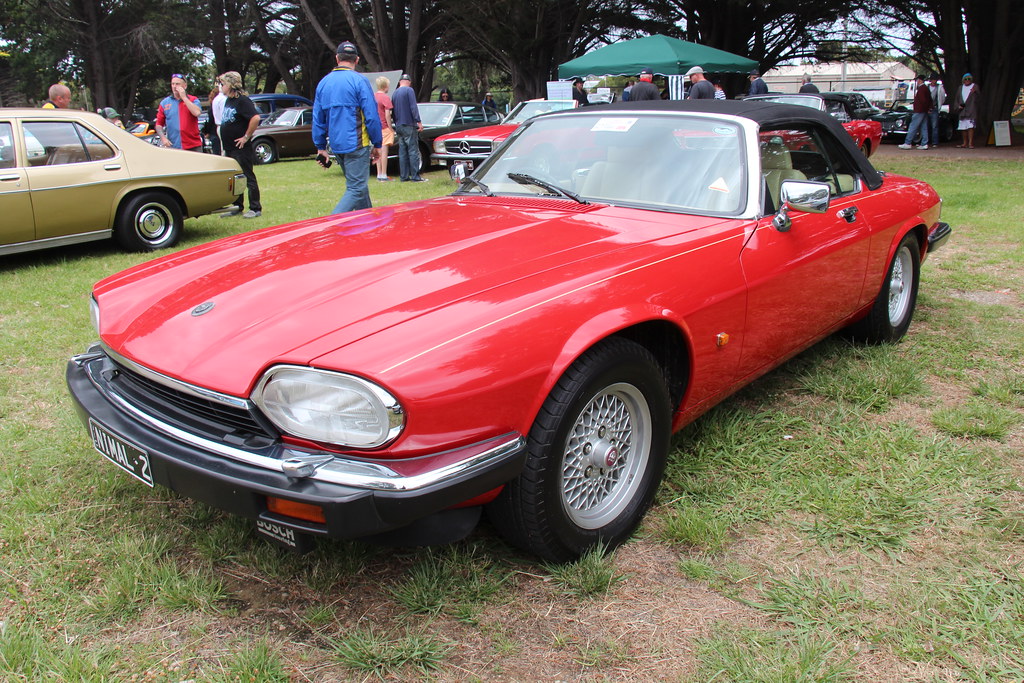
12. **Jaguar XJ-S**The Jaguar XJ-S emerged as a quintessential British luxury car, boasting an elegant design that was both sophisticated and distinctly Grand Tourer in its philosophy. Under its graceful hood, early models often housed a powerful V12 engine, promising a sublime blend of refined performance and opulent comfort, designed for effortless long-distance cruising. Its aesthetic was a bold statement, representing a different kind of Jaguar luxury.
However, the allure of its sophisticated engineering and luxurious appointments was often tempered by a notorious reputation for high maintenance costs. The XJ-S became widely known for frequent mechanical issues, particularly with its complex V12 engine and elaborate electrical systems. These demands for significant and often costly upkeep proved to be a major deterrent for many potential buyers and serious collectors alike.
While the XJ-S undeniably offers a uniquely luxurious driving experience and possesses a classic British pedigree, the ongoing financial commitment required for its ownership has consistently impacted its appeal among collectors. As a result, its market prices remain relatively low when compared to other vintage Jaguars, especially those with simpler, more reliable powertrains. It stands as an opportunity for dedicated enthusiasts willing to embrace its maintenance challenges for the sake of its elegant legacy.
Read more about: Rev Up Your Nostalgia: The 18 Most Iconic Cars of the 1970s
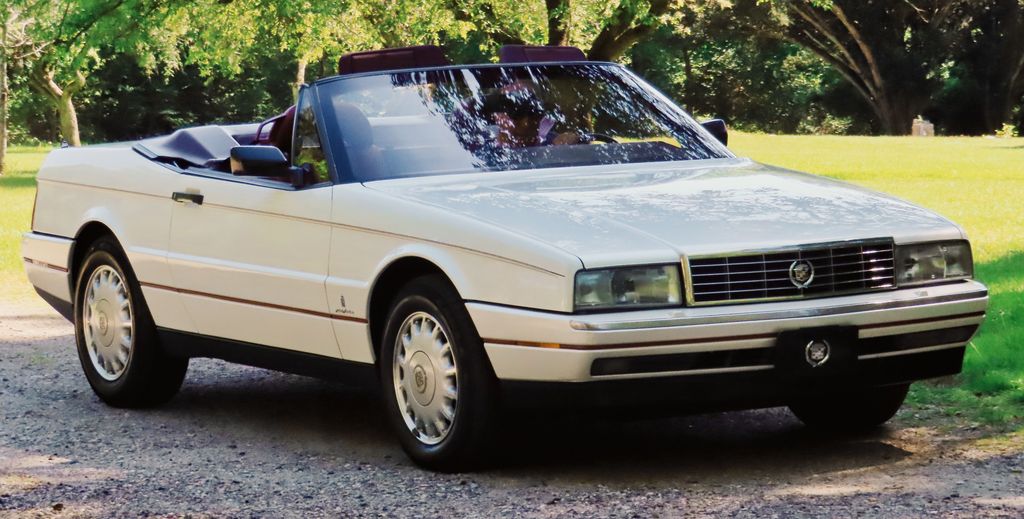
13. **Cadillac Allanté**The Cadillac Allanté represented a bold endeavor by the American luxury marque to create a truly world-class roadster, a direct competitor to high-end European convertibles. It uniquely blended American engineering with exquisite Italian styling, with its bodies famously designed and built by Pininfarina in Italy, then air-freighted to Detroit for final assembly. This international collaboration aimed to fuse transatlantic luxury.
Despite this ambitious cross-continental effort and a significant price tag at its launch, the Allanté struggled to carve out a dominant niche within the fiercely competitive luxury segment. Its performance often fell short of its European rivals, leading to a lukewarm reception from both critics and consumers. It was perceived as an expensive car that didn’t quite deliver the full European sports car experience it promised.
Furthermore, the Allanté was plagued by serious quality control issues and high production costs, coupled with intense competition from established luxury brands. Skyrocketing maintenance costs further deterred buyers and owners, causing the car’s value to plummet significantly. Today, it remains an affordable luxury car, appealing to those with an interest in a distinctive, albeit historically undervalued, classic that tells a compelling story of ambition and challenge.
Read more about: The Road Less Traveled (and Valued): 14 Classic Cars That Are Now Worth Less Than You Think

14. **Buick Reatta**The Buick Reatta was an intriguing experiment by Buick in the late 1980s, an attempt to introduce a sporty, upscale two-seater into its lineup. It aimed to merge luxury with a more engaging driving experience, distinguishing itself with a cutting-edge digital dashboard and a focus on personal elegance. This unique approach sought to capture a niche market looking for something different from traditional Buick offerings.
Despite its innovative features, which were quite advanced for its time, the Reatta never quite resonated widely with buyers. While it presented a sophisticated image, it often lacked the outright performance to truly justify its premium price tag, especially when compared to more established sports cars or luxury coupes. This disconnect between price, performance, and market expectation hindered its broader acceptance.
Consequently, the Reatta often finds itself overlooked by mainstream collectors due to its limited appeal and its position in a niche market that ultimately didn’t fully materialize. However, this oversight has kept its value relatively accessible, making it an interesting and unique choice for enthusiasts seeking a distinctive slice of 1980s automotive history. It represents an era of exploration in American luxury, available now without the original luxury car price.
Car Model Information: 1990 Buick Reatta 2dr Convertible
Name: Buick Reatta
Manufacturer: General Motors
Related: Buick Riviera#Seventh generation (1986–1993),Oldsmobile Toronado#Fourth generation (1986–1992),Cadillac Eldorado#Eleventh generation (1986–1991)
Production: 1988–1991
Chassis: unibody
Platform: GM E platform
BodyStyle: coupe
Engine: Buick V6 engine#Pre-Series I,V6 engine
Designer: Dave McIntosh (1983)
Transmission: Turbo-Hydramatic 125#Turbo-Hydramatic 440-T4,automatic transmission
Wheelbase: 98.5 in
Abbr: on
Length: 183.7 in
Width: 73.0 in
Height: 51.2 in
Weight: 3377 lb
Assembly: Lansing, Michigan
Layout: Front-engine, front-wheel-drive layout
Class: Grand tourer
Caption: 1988 Buick Reatta coupe
Categories: 1990s cars, Articles with short description, Buick vehicles, Cars discontinued in 1991, Cars introduced in 1988
Summary: The Buick Reatta is a low-volume transverse front-engine, front-wheel drive, two-door, two-seater grand tourer manufactured and marketed by Buick as a coupe (1988–1991) and convertible (1990–1991) — both featuring a 3.8 liter V6 engine and shortened version of the GM E platform, shared with the seventh generation Buick Riviera.
As Buick’s first two-seater and its first convertible since the 1985 Riviera, the Reatta was manufactured in a highly specialized assembly program at the Reatta Craft Center (later known as the Lansing Craft Center) in Lansing, Michigan—achieving production of over 21,000 units in four years.
Get more information about: Buick Reatta
Buying a high-performing used car >>>
Brand: Buick Model: Reatta
Price: $23,000 Mileage: 5,843 mi.
Read more about: Unvarnished Truth: 14 ‘Classic’ American Cars That Delivered Awful Driving Experiences
As we conclude this exploration of beloved classic cars that, for various reasons, haven’t quite reached the astronomical values of their more celebrated peers, it’s clear that the story of a car’s worth is multifaceted. It’s not just about initial appeal or groundbreaking design; it’s about enduring reliability, market perception, and the sometimes-unforgiving march of technological progress. These vehicles, each with their own captivating histories, offer a compelling argument that true automotive passion doesn’t always have to come with an exorbitant price tag. They stand as testaments to innovation, ambition, and the complex forces that shape the legacy and value of our most cherished machines. They invite a different kind of collector: one who values the story, the drive, and the sheer accessibility of owning a piece of motoring heritage, rather than solely focusing on investment returns. Each car on this list, despite its market shortcomings, still offers a distinct chapter in the grand narrative of automotive history, waiting to be appreciated by new generations of enthusiasts ready to look beyond the ordinary metrics of value. This offers a fantastic opportunity to own a piece of motoring history that offers both character and a compelling story, without breaking the bank.



